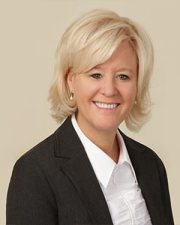About Us
Learn more about our experienced team, EB-5 knowledge, and what we offer as an EB-5 Regional Center
Our Commitment
The U.S. government designates regional centers to receive EB-5 investor capital and develop projects that promote regional economic growth and job creation. The Ashcroft Sullivan Economic Development Center (“Ashcroft/Sullivan Regional Center” or the “Regional Center”) received federal approval as a regional center in November of 2015.
Ashcroft Sullivan Economic Development Centers intend to offer qualifying investments in opportunistic, high quality real estate and private equity projects for its EB-5 investors.
Overview
Ashcroft Sullivan Economic Development Centers receive federal approval as EB-5 Regional Centers from the Department of Homeland Security’s U.S. Citizenship and Immigration Services (USCIS) in November of 2015 under the EB-5 Regional Center Pilot Program. As federally designated regional centers, our mission is to create new jobs in the Mid Atlantic and New England regions, expanding economic productivity and help foreign entrepreneurs obtain permanent residency for themselves and their families. Ashcroft Sullivan Economic Development Centers collect and distribute EB-5 program job creation credits (both direct and indirect job credits) to our participating foreign entrepreneurs to support their immigrant visa requirements. These job credits are derived from our qualifying investments in real estate and private equity projects in the Middle Atlantic and New England geographical areas.
Regional Center’s Scope
Approved Industry Codes — Ashcroft Sullivan Economic Development Centers will provide EB-5 capital to projects and promote job creation in a variety of economic sectors. Initial approval is sought in these economic sectors:
- 2361 Residential Building Construction
- 2362 Nonresidential Building Construction
- 5311 Lessors of Residential Buildings
- 5413 Architectural, Engineering and Related Services
Approved Geography — The Economic Development Centers expect approval in 2015 of a geographical area including the following counties in the Baltimore metropolitan area Baltimore, Baltimore City, Anne Arundel, Carroll, Harford, Howard and Queen Anne’s and expanding into the Washington, DC metropolitan area immediately thereafter. The Economic Development Centers also expect approval in the following New England counties: Bristol County, Norfolk County, Plymouth County and Providence County.
Within the Ashcroft Sullivan Economic Development Centers geographic limits, it will focus on project located in Targeted Employment Areas (“TEA”). TEAs allow immigrant entrepreneurs to place $500,000 to create 10 full time direct and indirect jobs instead of the customary $1,000,000 for placement outside of a TEA.
The combined value of finding opportunities located both inside the Regional Center and inside a TEA provides both: (i) direct and indirect job credit; and (ii) a lowered investment threshold to $500,000 to the entrepreneur.
What is a Regional Center
A “Regional Center” (“RC”) is a special designation issued by the USCIS. The designation provides major benefits to immigrant entrepreneurs seeking residency using the EB-5 program. Ashcroft Sullivan Economic Development Centers expect to receive regional center approval and designation to operate in the greater Baltimore, Maryland area expanding into the Washington, DC metropolitan area. The approval will also include the following New England areas: Bristol County, Norfolk County, Plymouth County and Providence County. View Ashcroft Sullivan Economic Development Center’s USCIS Designation Letter. [add link to letter when received please]
The EB-5 program counts both direct and indirect jobs created by the immigrant applicant, but will only do so for immigrants that apply through a federally designated regional center. In the case of applicants who do not participate in the regional center, only direct jobs are counted. If the applicant participates with a regional center, both direct and indirect jobs are counted towards the 10-job requirement.
Ashcroft Sullivan Economic Development Centers believe one of the most important advantages of working with a designated RC is the job creation requirements. The immigrant must prove he created and sustained 10 new, direct employees over a 24-month period. Under the Ashcroft Sullivan Economic Development Centers program, however, the immigrant can satisfy residency testing by showing the 10 jobs through a combination of direct and indirect job creation.
Another RC advantage is that immigrants may pool capital thereby reducing management responsibilities while increasing job creation results.





